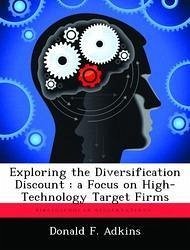When firms choose to acquire others, those acquisitions can either be considered diversifying or non-diversifying. Whether the firm diversifies or not has been shown to affect the post-acquisition performance of that firm. Past merger and acquisition (MA) research has identified a diversification discount when firms diversify through MA activity. However managers continue to diversify, posing the question, Why do firms continue to diversify in the face of research indicating negative post-acquisition performance? The answer may be found in that much of the past research has treated all acquisitions the same by analyzing a wide cross-section of acquisitions from industries of all types. This assumption may be wrong, as not all acquisitions are the same. The present research attempts to build on past research by analyzing only a single segment of MA activity--the high-technology industry between the years 1994 and 1998. In addition, this study differs from past research by analyzing firm post-acquisition performance over a longer three-year period. The present research did achieve significant results that may help eliminate some of the clouds over diversification's true impact on MA activity. A diversification discount was identified by the present research, confirming the findings of much of the past MA literature.
Hinweis: Dieser Artikel kann nur an eine deutsche Lieferadresse ausgeliefert werden.
Hinweis: Dieser Artikel kann nur an eine deutsche Lieferadresse ausgeliefert werden.








